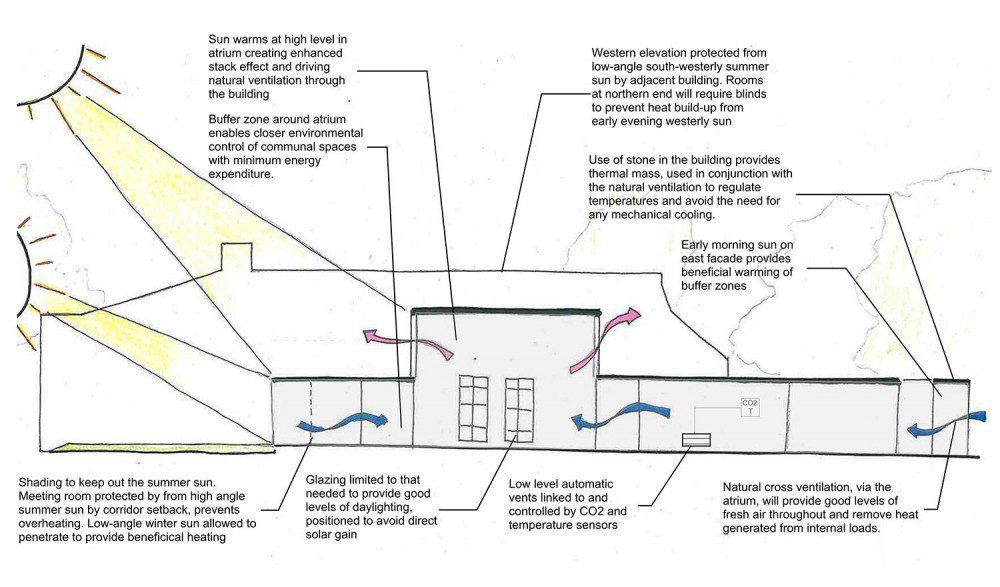How to design naturally ventilated low energy buildings with real fresh air

News Detail

Year:
2022
Country:
Global
Source:
Webb YatesThe simple design moves that give you naturally ventilated low embodied carbon systems with genuinely fresh air, writes Andy Lerpiniere
What is a low-embodied carbon ventilation system? It’s a simple question, with a simple answer: natural ventilation. There are no fans with bearings or electric motors, or the carbon used in making them. All you need to do is open the windows, it is about as simple as ventilation can be.
At one time all buildings were naturally ventilated, and we understood how to make those buildings work, to make them comfortable, pleasant places to inhabit. With the invention of cooling systems, we no longer needed to rely on outdoor air to provide comfort as well as to remove odours. Buildings could be designed with great glass facades that could never have been made comfortable with natural ventilation.
The days of throwing cooling at the problem are largely behind us. The drive towards reduced energy use and sustainability has taken us in a different direction: highly insulated, extremely airtight buildings that require much less heating and cooling energy, but demand to be mechanically ventilated.
There is much that is good in this approach. The controlled delivery of fresh air in winter, with heat recovered from the exhaust air stream, is undoubtedly an energy efficient solution, particularly when compared to the simplest ‘open the window’ natural ventilation schemes. The argument of course is that the uncontrolled supply of cold winter air directly affects heating bills and the comfort of the occupants.
More info